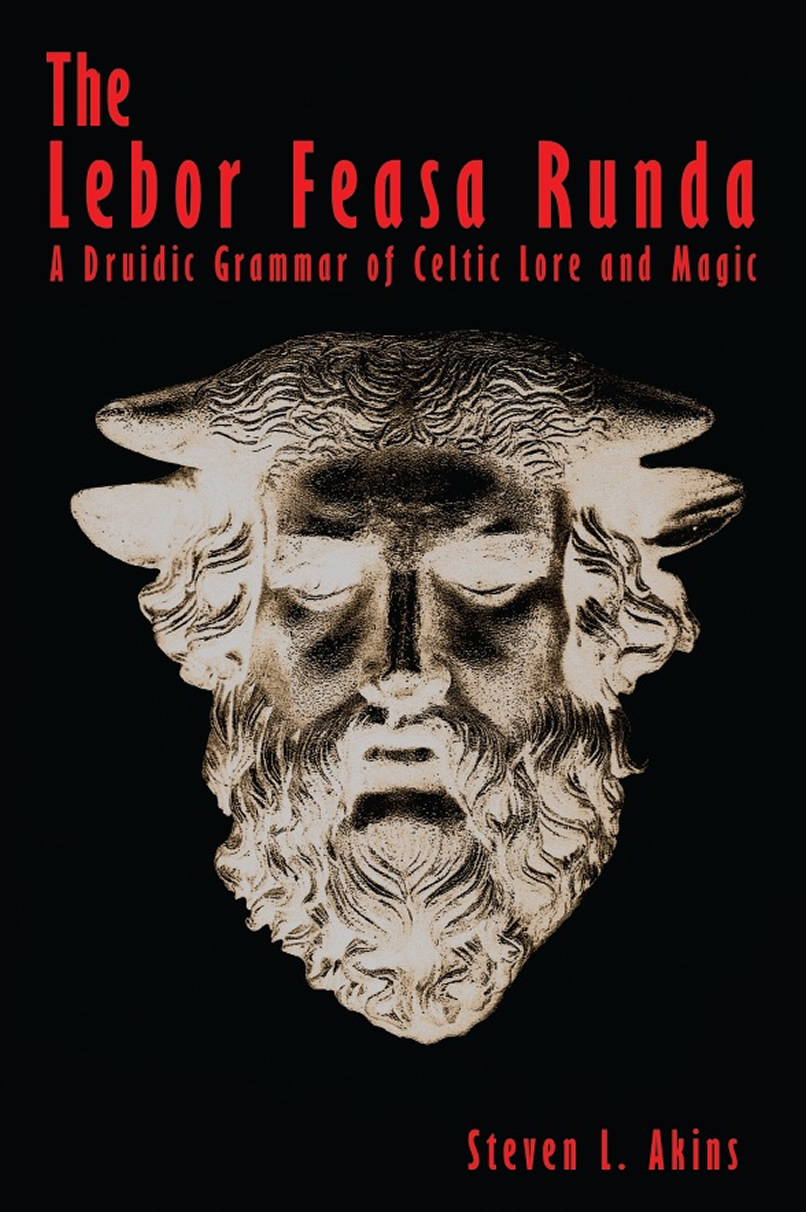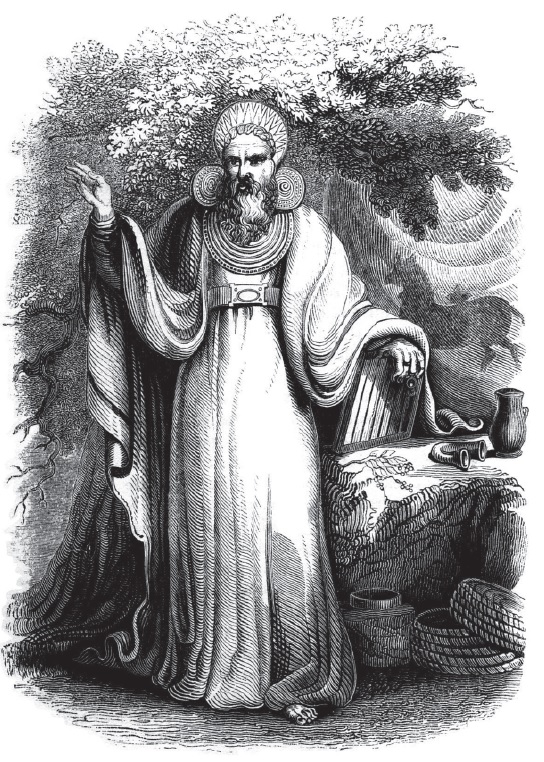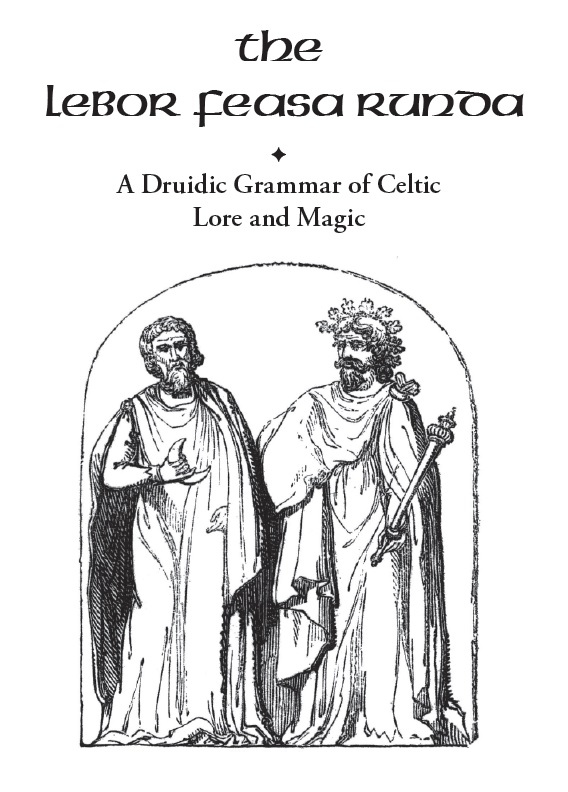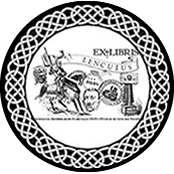
Steven L. Akins - The Lebor Feasa Runda
(Book of seceret knowledge)
A druidic grammar of Celtic lore and magic
Celtes - PDF
Magic - PDF

How the Ahnenerbe SS saved Celtic Pagan culture
An Interview with Steven L. Akins
By : Raven Wildewood - February 2, 2009
I recently had the opportunity to conduct an interview with Steven L. Akins, the author of The Lebor Feasa Runda, a controversial new book that has taken the Pagan community by storm....
Raven : Mr. Akins, you have recently published a book that you claim is a translation of an ancient Druidic text. Can you tell me more about this ?
Steven: I'd be very happy to. The Lebor Feasa Runda is a text that I believe to be a pre-Christian scripture of Irish origin that records the doctrine and teachings of the ancient Celtic Pagan priesthood known as the Druids. This text was brought to my attention a number of years ago and I was fortunate enough to be able to obtain a German translation of it that was made during the last century when the original manuscript was in the possession of the Ahnenerbe, the Ancestral Research and Teaching Society which existed as a department of the German government during the Second World War.
Raven : That's very interesting. So, how did an ancient Irish manuscript end up in Germany ?
Steven: According to the notes made by the German translator, it was believed to have been brought to Poland by Dr. John Dee and Edward Kelly in the 16th century under the patronage of Emperor Rudolf, and from there it ended up in the hands of some members of the Bavarian Illumanati and eventually found its way into the possession of the Thule Society from whom it was confiscated and turned over to the Ahnenerbe for translation by orders of Heinrich Himmler.
Raven : What do you think would have been the key to the Nazis interest in this text ?
Steven: I think that the Nazis saw some of the stories in the Lebor Feasa Runda as supportive of their theory that the Aryan race originated from a lost continent like Atlantis or Thule. The Lebor Feasa Runda relates how the gods once lived on an immortal island that lay to the west of Ireland until it sank beneath the Atlantic Ocean; this island was also the birthplace of the human race according to Celtic legend. Then, of course, there is the fact that the Lebor Feasa Runda reveals techniques by which the ancient gods of the Celts can be summoned to give their aid and assistance to those who contact them by means of magical operations; a prospect which may well have held an enormous appeal to the Nazis in their efforts to establish military domanince over Europe.
Raven : I see. So how did you come to translate the Lebor Feasa Runda into English ?
Steven: That is where a bit of divine intervention seems to come in. I actually met the widow of Henry Thorenson, the original German translator, quite by accident. During World War II, Thorenson was one of several thousand German soldiers who had been captured by the Allies and sent to an internment camp in the United States. After the war, Henry was released from prison and married a local girl named Evelyn who he had met while in the detention camp. The two of them settled down near the small Southern town of Aliceville, Alabama, where Evelyn grew up and where Henry had been confined during the war. Fortunately Henry had managed to hold onto a journal in which he had made a transcription of the text of the Lebor Feasa Runda, and he continued to work on his translation of it over the next 20 years. After meeting Evelyn and talking with her about her husband's work, she was kind enough to send me a copy of his German translation which was never published. After reading it and realizing what it was, I decided to translate it into English and have it published myself.
Raven : So what became of the original Irish manuscript ?
Steven: No one knows for certain. The original manuscript was found missing from the Ahnenerbe archives on May 10, 1941, the same day that Rudolf Hess Hitler's deputy Fuhrer made his solo flight to Britain claiming to be on a peace mission. Hess evdently had planned to meet with the Duke of Hamilton to discuss the terms of a proposed peace treaty between Germany and Great Britain, but he ran short of fuel trying to locate the Duke's private landing strip in the dark of night and had to bail out of his plane. Hess's parachute came down a few miles short of his intended destination, injuring his ankle on impact. He was taken into custody shortly thereafter and the documents he was carrying were confiscated. Hess was held prisoner by the British government until the end of the war and his trial at Nuremburg, where he was sentenced to spend the rest of his life in Spandau prison. No trace of any of the documents being carried by Hess has been found to this day; so if he was carrying the original Irish manuscript of the Lebor Feasa Runda, which Thorenson believed he had intended to present to the Duke of Hamilton as a gift of goodwill, there is no telling what became of it; though the British government would be the most likely candidate responsible for its disappearance.
Raven : Since publishing the Lebor Feasa Runda, your translation of this text has recently drawn some criticism from members of the academic community due to the fact that you did not submit it to peer review prior to publishing it. How do you respond to this ?
Steven: As an independant scholar working outside the academic community, my research is not tied to any university or association of other scholars. Since my translation was made from a photocopy of a type-written German version of the text, there was no original surviving manuscript in my possession to submit for analysis and comparision. I have also had to deal with issues relating to the heirs of Henry and Evelyn Thorenson who did not wish their father's German translation published due to their desire to avoid any encroachment on their privacy, which I fully respect.
Raven: Of course. But another point that has been brought up by some in the field of Celtic studies is that while part of the material in the Lebor Feasa Runda follows very closely what is found in the Irish Celtic myths that have been preserved in medieval texts, other parts of it deviate significantly from the versions recorded in the Middle Ages; such as the inclusion of a horned god in the opening chapter of your book, which is otherwise unattested to in surviving Irish sources. Why do you think this is ?
Steven: When dealing with the mythology of Celtic Ireland we are looking at stories and legends that were not written down until well into the Christian era. For the most part, these formed the basis of what was originally an oral tradition, and while the tellers of these tales certainly made an effort to accurately commit the many details of these stories to memory; after a period of several generations and many hundreds of years, discrepancies naturally occurred. This was also partly due to the influence of Christianity, as the stories were most often recorded by monks of the Christian Church who had their own agenda to promote and tended to tone down the Pagan elements which were often hidden under a thin veneer of Christian influence. Thus the character of Cerna, the horned god who is deposed as a ruler of the wilderness as a result of fathering the human race with the goddess Brighid and is expelled from Tir nan'Og to rule over the realm of the dead, was not a popular deity in the eyes of the Christian scribes due to the parallels they saw between him and their own Biblical devil. Yet his legend managed to survive in Ireland, albeit in a much debased form, in the character of Derg Corra, the man in the tree; while the dim memory of his name is echoed in the character of Conall Cearnach, a hero of the Ulster Cycle charged with rounding up stolen cattle and was invulnerable to serpents.
Raven : I see. So you believe that the Lebor Feasa Runda preserves an older, more authentic version of the Celtic Myths before they began to degenerate over time and were affected by Christian influence ?
Steven: Exactly. In fact, you can see archaelogical evidence of the legend of the horned god depicted on scenes of various artifacts that have been recovered from Celtic areas in Europe, such as the Nautes Pillar in Paris, which shows not only the Gallic horned god, Cernunnos, but other scenes representing his expulsion from the fellowship of the gods in the form of Tarous Trigaranus, the bull with three cranes, who hides in a tree being felled by the god Esus. Another artifact from Trier, Germany, shows the same scene.
Raven : And what is your interpretation of these ?
Steven: I see them as illustrating a cultural shift due to the introduction of agriculture displacing the prominence of a deity primarily associated with hunting and herding. Once agriculture had been introduced, the gods associated with it became the central focus of Celtic culture, as hunting and raising animals for meat took a backseat to more labor intensive farming. Since crops would not grow in winter and meat was still needed to supplement an agrarian diet, animals would have still been hunted and slaughtered during the winter months when the earth and fields lay barren; thus the horned god came to be viewed as a god of the dead and the underworld in addition to his association with animals.
Raven : Clearly this makes sense. So the legend of the horned god was tied to a theme of seasonal cycles of death and rebirth ?
Steven : Absolutely.
Raven : I know that a number of your critics have taken exception to some of your personal viewpoints outside of your publication of this book, due to your more conservative stance on a number of issues. Do you see this as an attempt to discredit your work ?
Steven: I definately think that is a major motivation behind their intentions. It's no secret that some of the most outspoken critics of my work in translating the Lebor Feasa Runda have been other authors within the Pagan community. Individuals like Erynn Laurie, Philip Bernhardt-House, Clare Vaughn, C. Lee Deveers, Brendan Myers, and Ben Gruagach, belong to a small coterie of far left-leaning, politically liberal radicals who see Paganism as being the private property of homosexuals, feminists, and multi-culturalists, from which anyone of a more conservative outlook should be excluded. My own social and political views tend to rub them the wrong way as I believe that the Celtic culture from which my own heritage stems should be preserved and protected from outside influences which would compromise its ethnic integrity and dilute it to the point of obliteration.
Raven : So you see culture as being the exclusive property of its respective ethnic group ?
Steven : I think it should be, since different cultures develop among different ethnic groups; and the cultures that arise exist as an extention of the beliefs, values, attitudes, ethics, customs and traditions of the group from which they emerge.
Raven : Which is an attitude that some might consider to be racist.
Steven : Some do, but their interest is not in preserving any particular culture. Most of the people who would label me as a "racist" have an agenda of promoting multiculturalism, which is cultural blending. They preach "diversity" but clearly they are not interested in maintaining the distinctions that define different ethnic groups and their cultures. If you mix everything together, there is no diversity, you only end up with an ambiguous mass lacking any sort of distinctive identity.
Raven : Well I would like to thank you for taking the time to answer my questions regarding your book and I certainly hope that it is well received; I enjoyed reading it.
Steven : Thank you, Raven, I have enjoyed the interview.




